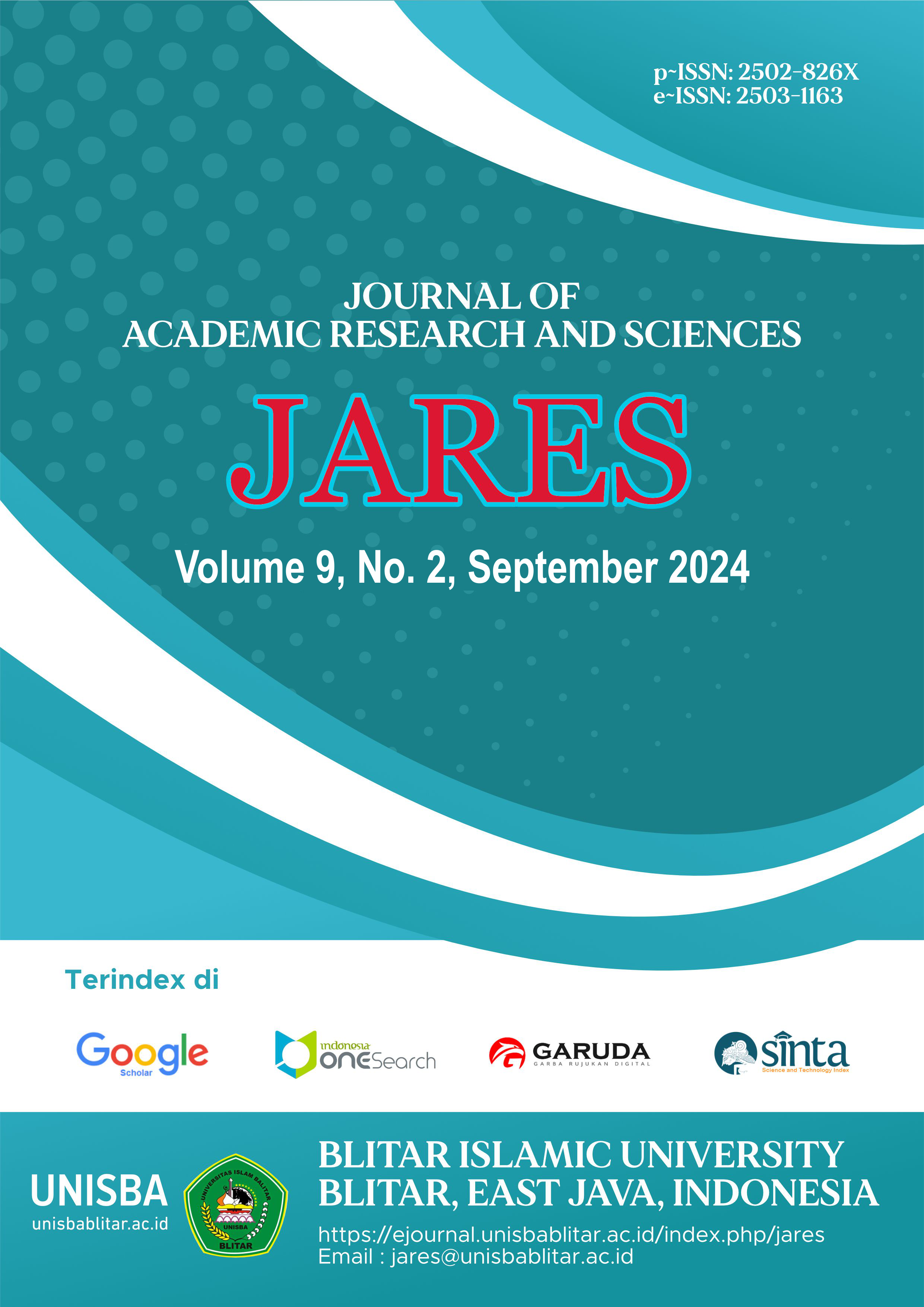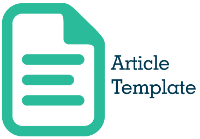BOSIVA AS AN ANDROID E-BOOK IN DISCUSSION OF ADAPTATION OF LIVING CREATURES FOR FIFTH GRADE OF ELEMENTARY SCHOOL
DOI:
https://doi.org/10.35457/jares.v9i2.3314Keywords:
E-Book Teaching Materials, Teaching Product Development, Living Creature AdaptationAbstract
Science subject in elementary school is a subject that invites students to reason about the surrounding natural conditions. The findings of the researchers indicate that there is a shortage of science learning facilities at several elementary schools in Blitar. As much as 84% of students in the observation stated that science lessons were difficult to understand. In addition, teachers and students who were interviewed stated that e-book teaching materials were interesting as science teaching materials, especially in materials on adaptation of living things to grade V SD. Therefore, researchers proposed Bosiva as a solution for developing new teaching materials in natural science material for adaptation of living things in digital form. This research is based on modified R&D which includes potential and problem formulation, data collection, product design, design validation, design revision, product testing, and product revision. Researchers developed Bosiva to find results for material expert validation of 86%, language validation of 93%, and media validation of 95% which all stated very feasible. In addition, the results of the teacher's readability test were 95% and the student's readability test was 97% which were also classified as very feasible. So, it can be concluded that Bosiva is a breakthrough in the development of android-based teaching materials to support learning adaptation of living things.
Downloads
References
Prihantoro, A. (2010). Pembelajaran, Pengajaran, dan Asesmen. Yogyakarta: Pustaka Pelajar.
Wei, J., Chu, X., Sun, X., Xu, K., Deng, H., Chen, J., Wei, Z., & Lei, M. (2019). Machine learning in materials
science. InfoMat, 1(3), 338–358.
Tamayo, J. L. R., Gertrudix Barrio, M., & García García, F. (2017). Immersive environments and virtual reality:
Systematic review and advances in communication, interaction and simulation. Multimodal Technologies
and Interaction, 1(4), 21.
Amri, S., & Ahmadi, I. K. (2010). Proses pembelajaran kreatif dan inovatif dalam kelas. Jakarta: Prestasi
Pustaka.
Lestari, I. (2013). Pengembangan bahan ajar berbasis kompetensi. Padang: Akademia Permata, 1.
Putrawansyah, F., & Sardianto, M. S. (2016). Pengembangan digital book berbasis android materi
perpindahan kalor di sekolah menengah atas. Indonesian Journal of Networking and Security (IJNS), 5(4).
Ciptaningtyas, W., Mukmin, B. A., & Putri, K. E. (2022). E-Book Interaktif Berbasis Canva Sebagai Inovasi
Sumber Belajar Materi Sistem Pencernaan Manusia Kelas V SD. Jurnal Pemikiran Dan Pengembangan
Sekolah Dasar (JP2SD), 10(2), 160–174.
Intisari, R. W., Sofiyana, M. S., & Sholihah, M. A. MEDIA AGAMI UNTUK PEMBELAJARAN TEMATIK SISWA KELAS
III SD. Primary: Jurnal Pendidikan Guru Sekolah Dasar, 10(5), 1079-1090.
Sugiyono. (2019). Metode Penelitian Kuantitatif, Kualitatif, dan R&D (Sutopo. Bandung: CV. Alfabeta.
Sofiyana, M. S., Aswan, N., Munthe, B., Wijayanti, L. A., Jannah, R., Juhara, S., ... & Fitriasari, N. (2022).
Metodologi Penelitian Pendidikan. Global Eksekutif Teknologi.
Maghfiroh, I. Z., Sholihah, M. A., & Sofiyana, M. S. (2023). Enhancing Students Learning Outcome in Class V
Elementary School with Ecosystem Diorama Media. Primary Education Journals (Jurnal Ke-SD-An), 3(2), 229-
Riyanto, S., & Sofiyana, M. S. (2019). Android-based rusa (Ruang Siswa) learning media with Appypie
application to enhance learning motivation and outcome of animalia material of grade X students of senior
high school: a research and development. JOSAR, 4(2).
Sofiyana, M. S. (2021). Validasi atlas liken di Kota blitar. Konstruktivisme: Jurnal Pendidikan dan
Pembelajaran, 13(2), 152-157.
Septiana, E. W., Sofiyana, M. S., & Sulistiana, D. (2023). SCRAPBOOK LEARNING MEDIA IN CLASS X
ECOSYSTEM MATERIALS. JARES (Journal of Academic Research and Sciences), 8(1), 25-34.
Wijaya, E. D., Anggraini, D. P., & Sofiyana, M. S. Development of BOBI (Blog Biologi/Biology Blog) for Grade XI
Students of Senior High School. Bioedukasi: Jurnal Pendidikan Biologi, 15(2).

Downloads
Published
Issue
Section
License
Authors who publish with this journal agree to the following terms:
- Copyright on any article is retained by the author(s).
- Author grant the journal, right of first publication with the work simultaneously licensed under a Creative Commons Attribution License that allows others to share the work with an acknowledgement of the work’s authorship and initial publication in this journal.
- Authors are able to enter into separate, additional contractual arrangements for the non-exclusive distribution of the journal’s published version of the work (e.g., post it to an institutional repository or publish it in a book), with an acknowledgement of its initial publication in this journal.
- Authors are permitted and encouraged to post their work online (e.g., in institutional repositories or on their website) prior to and during the submission process, as it can lead to productive exchanges, as well as earlier and greater citation of published work.
- The article and any associated published material is distributed under the Creative Commons Attribution-ShareAlike 4.0 International License













